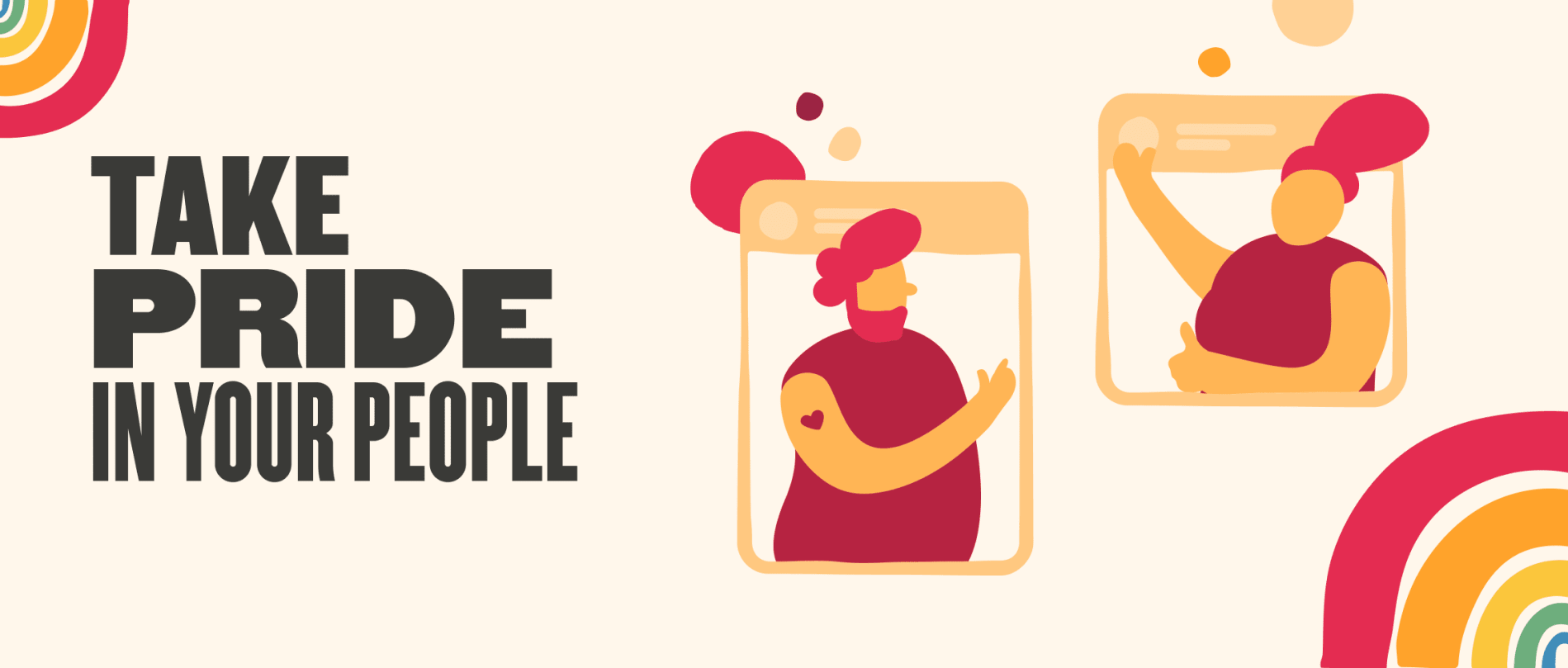June is pride month, the perfect time to talk about inclusion in the workplace. Let’s start with reason to celebrate; over the past decade, organizations have made significant strides in championing diversity in the workplace, increasing representation, and developing equitable HR policies and benefits for LGBTQ employees.
Now for a dose of the hard truth; many LGBTQ employees do not feel truly included in the workplace.
A 2020 study by Boston Consulting Group and New York City’s Lesbian, Gay, Bisexual & Transgender Community Center found that 40% of LGBTQ people are closeted at work, and 75% have reported experiencing negative day-to-day workplace interactions because of their LGBTQ identity. According to the research, employees who are comfortable self-identifying as LGBTQ at work reported feeling safer, more productive, and more willing to take creative risks. Those who didn’t felt less motivated and were more likely to quit.
Hiring a diverse workforce is meaningless if your employees don’t feel free to bring their authentic selves to work. Creating a company culture where everyone feels included is the only way to ensure your diversity efforts have a real impact.
Here are three ways HR can create cultures of inclusion and more positive workplaces, where everyone is free to be themselves.
1. Normalize pronoun use throughout your company
The best way to make someone comfortable is to demonstrate that you have an inclusive environment overall. HR can help non-binary employees feel comfortable sharing their pronouns and gender identity by asking all employees to add their pronouns to their email signature, Linkedin, or company profile. When making introductions at the beginning of a meeting, ask everyone to go around their room and state their pronouns. Move away from the idea that you can look at someone and know their pronouns and instead ask people how they identify.
Similarly, evaluate your tech stack to see if it’s flexible and inclusive. Be sure that if you’re asking an employee to check a gender box, it includes more options than just male, female, and other (grouping people together as “other” is problematic in and of itself). If those options don’t exist, be human, and acknowledge to employees that you are trying to do better.
2. Give employees a voice with anonymous reporting tools
HR is the outlet for employee concerns, but many instances of harassment or intolerance towards LGBTQ employees go unreported. Employees either think nothing will be done or worse, that they’ll suffer a career setback because they spoke up. The message that employees are receiving is that the company doesn’t care. This feeling can ring true in even the best workplaces, so HR needs to go the extra mile to let employees know they can and should speak up.
Providing an anonymous reporting tool to employees sends a strong message from HR that we care, we’re here, and we’re listening. This is only one part of the equation. The other part is action. HR departments should also institute a zero-tolerance policy and enforce it when necessary.
3. Measure inclusion through surveys and employee input
HR teams know how to collect data on everything from productivity to engagement to employee satisfaction—and of course, inclusion. HR can send out employee surveys and ask people to rate both the company’s DE&I performance and to rate their managers’ inclusion efforts. Creating a culture of inclusion starts at the top, but managers play a crucial role. They have the closest interactions with employees and therefore set the tone for team behavior and are in the best position to intervene if any toxic behavior is exposed. HR should also train managers on how to drive inclusion and on different intervention methods. As with any survey, be transparent with employees about the results and any solutions to address them.
Recommended For Further Reading
Empowering LGBTQ employees to be their true selves at work
LGBTQ employees are not strangers to hostility or micro-aggressions in the workplace. Many are closeted at work out of fear of how others will treat them or that they’ll suffer a professional setback.
Concealing gender identity or sexual orientation can be exhausting, demoralizing, and suffocating. For all employees to be healthy, happy, and productive, we need to erase the fear and replace it with freedom. Create the kind of workplace where everyone is free to come as they are, and celebrate your employees for the diversity they bring. Whatever flags your employees fly, give them the support and encouragement they need to wave them high and proud.


